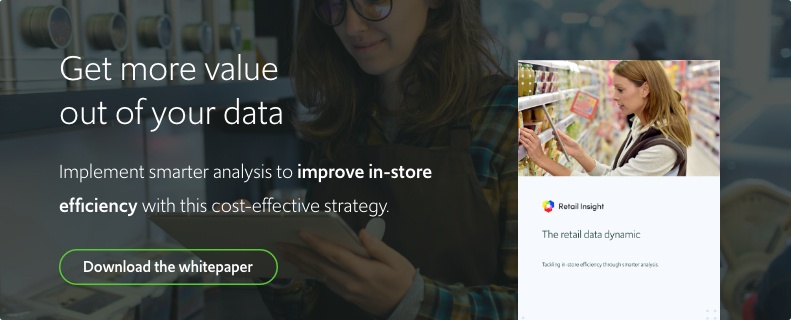Data-driven performance improvements in grocery retail: Pursuing the 1%

- 3 minute read
- Tom Coe
Elite sport is a results business. The difference between winning and losing often comes down to the finest of margins. As Al Pacino said in Any Given Sunday, it is all about the ‘inches’.
I have also heard margins described as the “1%’ers” – if you get them right then success is guaranteed. Right?
In data-driven performance improvements: Distance running and data, I discussed how maximizing the finest of margins in Nike’s Breaking2 marathon project propelled Eliud Kipchoge to complete a 2-hour marathon. When it comes to an elite sports perspective, I agree that margins are indeed the deciding factor in success Finely-tuned athletes tend to achieve success thanks to the most minute details – all things being equal. Stories of athletes sleeping in oxygen tents to increase red blood cell count and drinking beetroot juice to aid recovery are common.
But there is no point in obsessing about the 1% if you fail to optimize the other 99%.
Look beyond the 1%
Recent trends in society see amateur athletes attempt to mimic the success of their sporting heroes by adopting similar practices and investing in similar technology. I know, I have been there; “where can I find an extra 1%? Maybe in that new GPS watch, the latest shoe technology, or even those enhanced supplements”.
The reality is that these ancillary components pale in comparison to the huge performance gains you can make if you master and optimize the basic elements of the sport. The fundamentals. Sleep, nutrition, consistency in – and sensible approach to – training, for example.
But I have seen athletes overlook these fundamentals. Instead of optimizing core criteria, they focus on the margins. They take the misguided view that their core is already strong and requires no further work.
Grocery retailers are susceptible to the same mistakes
This is similar to what we see in grocery retail. The core challenges that all grocery retailers face have not changed throughout the years. Even when dealing with the sudden rise in e-commerce delivery and click-and-collect over the course of the pandemic, it is the fundamentals that drive the difference.
On-shelf availability is too low. Customers cannot get what they want when they want it. And this has a huge impact on satisfaction and can cost grocery retailers up to 8% of total sales every year in missed opportunities. By contrast, food waste is too high. Demand is below expected levels, which leads to overstocked shelves and, if not sold through clearance, retailers having to throw surplus produce.
Retailers have invested inordinate amounts of money into complex and often ambiguous technology solutions to address these problems. Some require the retailer to create wholly new data feeds (and even new research departments) just to get to the starting line.
The intention is that this new retail data will create savings that have not been seen or achieved. Through comparable store sales increases and profit improvements, for instance. But have retailers exhausted the value that lies in the data they already have?
Optimize your data
For retailers to quickly make progress against profitability targets – particularly given the backdrop of COVID and further related on-costs – they must fully optimize and leverage the data they already have.
Despite being around for a long time, retailers rarely use sales and inventory data as comprehensively as they could. But this has the potential to solve fundamental challenges, without the need for significant up-front costs – as is the case for other technologies on the hype-cycle.
If you are a retailer, then I will make you a promise – there is so much that could be done with what you already have. Come and talk to us to find out more.
Get in touch
Written by Tom Coe
Tom is the Project Manager to the CEO at Retail Insight. A former NCAA distance runner, he now uses his competitive passion in everything he does at Retail Insight, with a particular focus on strategy and partnerships. He is an MBA graduate from Tulane University and is a Business Management graduate from the University of Birmingham.
